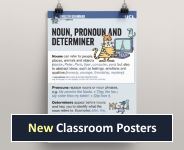Linguistics of lies
In this lesson, students explore the features of lies, from a linguistic perspective.
Goals
- Discuss the features of lies from a linguistic perspective.
- Identify pronouns, negative emotional terms, sense terms and causal phrases.
- Discuss the role of context in interpretation.
- Present evidence to support an argument.
Lesson Plan
Background
Some researchers have suggested that when people tell lies there are recognisable linguistic clues that can be spotted. Psychologists often focus on body language – gesture, facial expressions and stance – but linguists look for markers in the language.
It’s not an exact science, though, and you can see that the ideas in this link, about using a lie detector that picked up clues from spoken language, never got beyond the pilot stage.
Elsewhere, grammatical and lexical clues have been used more successfully. For example, in research carried out by a team at Cornell University, led by Jeff Hancock, and reported on in the Sunday Times, the following observations were made:
- One of the main giveaways is the length of a message. Emails that mask a lie have, on average, 28% more words than truthful messages. ‘When you’re lying, you are trying to give a credible story so you provide more detail, you are in persuasive mode,’ said Hancock.
- Liars are also more likely to use third-person pronouns, such as they and he, in a bid to distance themselves from a lie because of the guilt associated with it.
- ‘People also tend to use negative emotional terms because they feel uncomfortable when they are lying,’ said Hancock. ‘So they tend to use terms like "sad", "angry", "unhappy" and "stressed out”’
- Another telltale sign of a fib is the overuse of ‘sense terms’, such as see, feel and touch, which Hancock believes are employed to build up an elaborate and evocative account of a scenario that may never have happened.
- Finally, liars tend to use fewer ‘causal phrases’ to minimise the chances of being caught out.
So, for example, a person conducting an illicit affair is less likely to say they were unable to get home early last night because they were with someone else. ‘They will just say, “Sorry, I couldn’t meet you” and be deliberately vague,’ said Hancock.
(Source: The Sunday Times)
Activity
Using the data provided on the activity slides (see arrow link at the bottom of the page) taken from emails to a team leader at an office, try working out – from the clues suggested above and your own linguistic observations – which person is most likely to be lying. Try to arrange the four extracts in order, with the most likely to be lying at one end, and the least likely at the other end.
You will need some precise linguistic evidence for the decision you make, so try to find at least four separate points in each email which you think are significant in telling us whether they are lying or telling the truth.
Extension activity
After you have made your choices and picked out the linguistic features which informed your decisions, try to think about the following questions. Does knowing more about some of the context change your mind at all?
- Three out of the four messages are from people who have children. How many of them refer to their children in the messages? How do they refer to them?
- Three of the four messages are from male staff and only one from a woman. Does this affect the way in which you interpret them?
- How sure can you be that your observations about their language are accurate? What other evidence would help you to work out if someone was telling the truth or lying?
- Printer-friendly version
- Log in to view or leave comments


